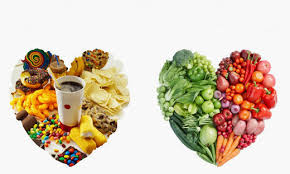Eat Food that is as Close to as Nature Intended
Making lifestyle choices with your diet are rarely easy. People make food choices for so many different reasons. And often we do not even think about it. Like why do you buy Skim milk vs Whole milk? Is it Oreos or Chips Ahoy? Do I buy apples or oranges?
These choices reflect preferences, impulses, memories and a whole host of other reasons. And there is a vast difference between an apple picked off of a tree in your backyard and a McDonald’s Big Mac.
In the same seminar mentioned in Pt 1 of this article:
the suggestion to the issue about what to eat came in a pretty simple statement:
“Eat food that is as close to as nature intended.”
I thought about this for a long time and it makes sense.
Fruit is good. Canned fruit is good. An apple from the grocery store is better. A farmer’s market melon picked that morning is better. An organic peach fresh picked off the tree and washed with spring water . . . You get the drift.
We all have to eat. It is about the choices we make when it is time to eat that set the standard for health. For some, it is easy. They choose a specific dietary lifestyle and stick to it.
I am Vegan. I am a vegetarian. I am a pescatarian. I eat gluten free. Sugar free. And it goes on and on.
But the “as close to as nature intended” rule is a wonderful place to start. It puts the choices we make into a ranking. And it helps us consider what level of processing we choose to eat.
What meats do you eat? Is it fast food? Do you buy it at the store? Whole foods or Acme? Is it hormone free? Was it free range or raised in a pen? Did you go out and hunt it, skin it and smoke it by a campfire? Where you live and how close you are to modern amenities (or natural resources) will be a large part of this decision.
What do you snack on? Carrot sticks? A bag of mixed nuts and raisins? Crackers? Cookies? A Snickers? Nacho Cheese Doritos with Queso dip?
What vegetables do you eat? Fresh picked tomatoes from the garden? Hot House tomatoes for $1.00 per pound more at the grocery store? Canned tomatoes? Pace Picante sauce? Ketchup?
I tries to implement a lot of these decisions here at home, with much resistance and indifference. Then, our daughter, who was in about 6th grade, was tasked with reading the book, “Chew on This: Everything you don’t want to know about fast food.” It is the school version of the Book turned into the movie Fast Food Nation. It chronicles the journey of the author who decided that he would only eat McDonald’s food for a month.
For all of my feelings about Common Core education, this was a piece that worked (though I think that it was something slipped in by the teachers who were there before the Core, and saw its value).
Two years later, our daughter still refuses to eat most fast food – especially McDonalds. And while this is not intended to be an attack on Frankenfood inc, it does point out that eating this kind of food is a choice. It has consequences.
For me, the most dramatic diet I have been on is No processed sugar. Seems simple enough until you look at all the foods that have sugar in them. Pretty much ALL processed foods. Bread. Milk. And when I did the diet, I had to add my own restrictions – I do not eat beef. The result, both times on the diet, was weight loss. Was it because what I was eating was more healthy? Or was it that I could not find food to eat when I was hungry. I will write about the details of this diet another time. But it was definitely something to try.
Which brings me back to the drugs we are taking. The point of being as close to as nature intended was to consider the choices we make. And to pay attention to what we are eating. I do not think we are intending to be unhealthy when we open a can of Pringles. They taste good. All the chemicals they add to them were developed for reasons, and your health wasn’t one of them.
Will these “crisps” kill you? Probably not today. Could you make a healthier choice? No doubt.
